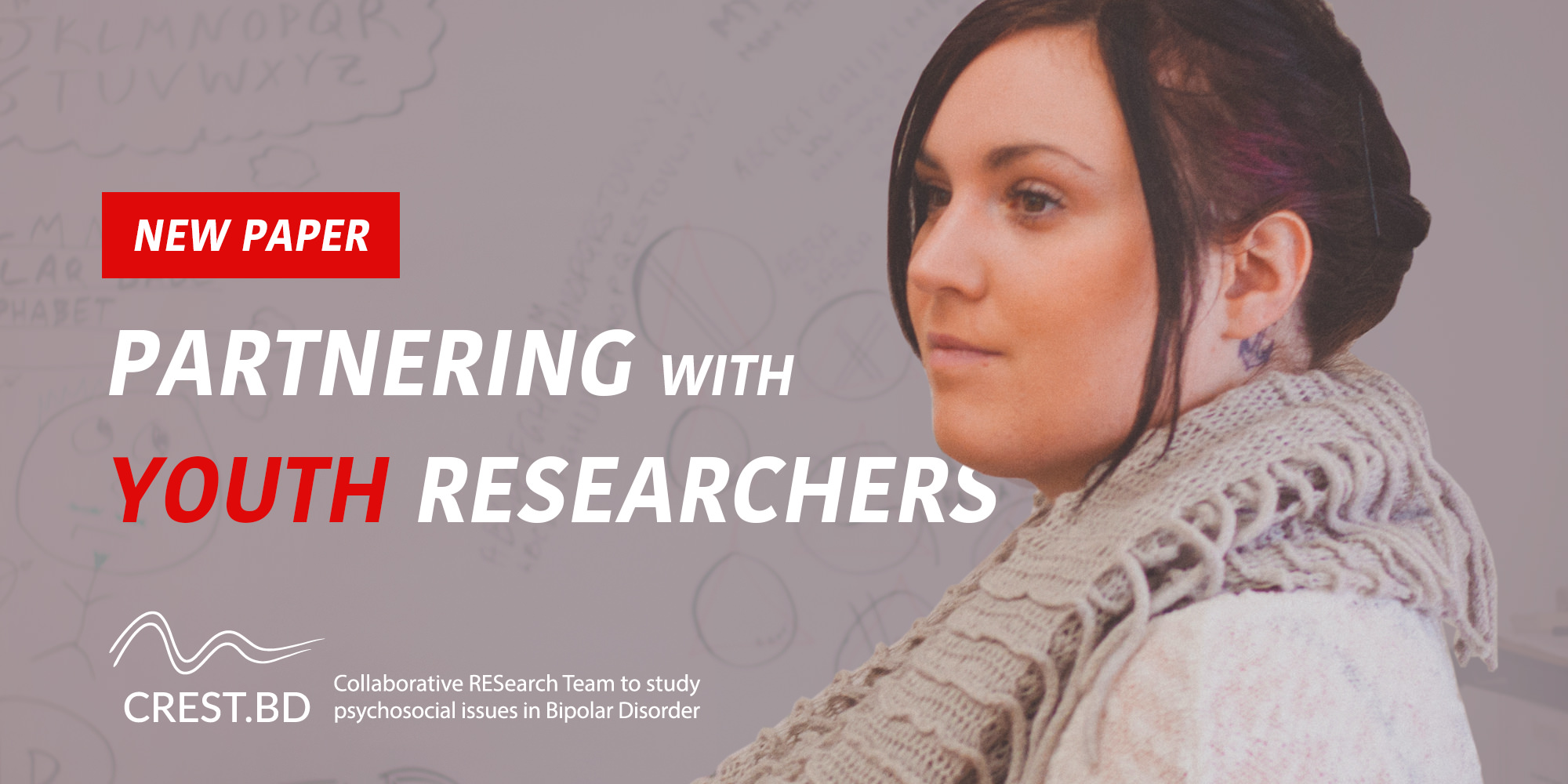Our newest paper has just been published by the Journal of Participatory Medicine! The paper, The Bipolar Youth Action Project: Community-Based Participatory Research shares the process of working with youth peer researchers on the Bipolar Youth Action Project, and lessons learned about engaging youth in mental health research.

The Bipolar Youth Action Project was conducted by CREST.BD and The Stigma-Free Society (then called The Bipolar Disorder Society of British Columbia). It recruited 12 young adults living with bipolar disorder as peer researchers on an 18-month project that sought to uncover (1) what self-management strategies youth with bipolar disorder use to stay well, and (2) what forms of knowledge translation youth with bipolar disorder prefer. Another goal of the project was to add to the knowledge base on how to involve youth with bipolar disorder in mental health research. In this new paper, we reflect on that secondary goal, and share learnings about how to support peer researchers through flexibility, communication, and helping them build capacity over time.
You can read the open-access article at the link below:
Read Article




Through the retrospective analysis of studies in schizophrenia, I have come to the conclusion that this disease originates from abnormal levels of calcium interacting with abnormal levels of cortisol and that it is reversible as demonstrated in coincidental cases of parathyroid surgery on schizophrenic patients after which the initial diagnoses of schizophrenia was presumed to be a mistake in almost all of the case studies.